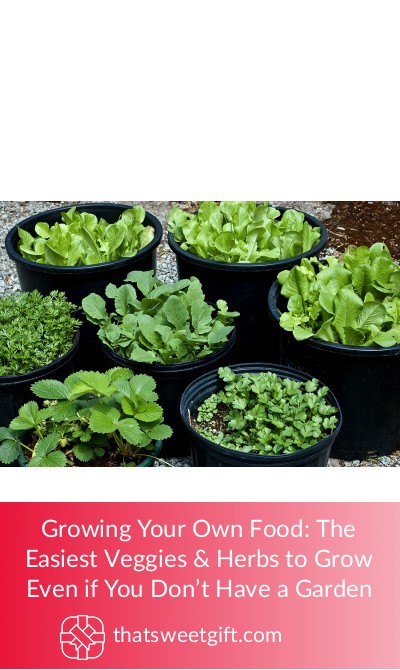Growing Your Own Food: The Easiest Veggies & Herbs to Grow Even if You Don’t Have a Garden
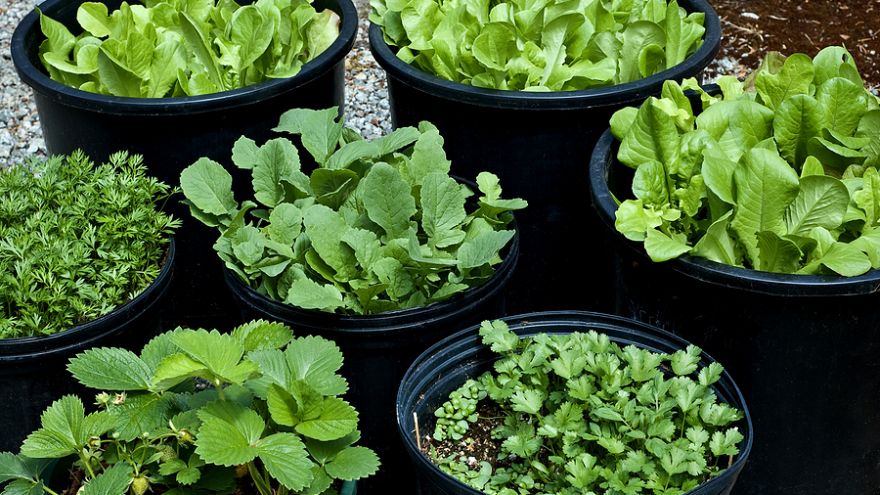
With rising prices in grocery stores, more people are beginning to consider growing their own food. Though there are still some homeowners that think it’s impossible, as they don’t have a garden. Luckily, there are plenty of ways that you can grow your own food at home without a garden.
All you need is the right seeds, the right tips, and a few basic materials. We’ve found the top plants to grow at home even if you don’t have a garden. The best part? They’re so simple to maintain that even your kids can do it!
1. Lettuce Mixes

As arguably one of the most useful vegetables that you can grow, lettuce mixes are a fantastic plant. You can either grow them outdoors or indoors, but growing them inside is easier than you think. If you’re able to find cutting lettuces, once you harvest the leaves, they will grow back on their own. This means you won’t have to worry about replanting anything in the near future!
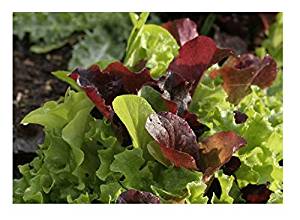
To plant lettuce mixes, all you need is a pot, potting soil, seeds, and a spray bottle. Start by planting the seeds in your pot with potting soil. You’ll want to start by using at least 15 seeds. Using your spray bottle filled with water, sprinkle moisture over the seeds and then place the pot in a sunny window. As soon as the seeds begin to germinate, thin them out so that the strongest seeds get the most nutrients.
2. Scallions
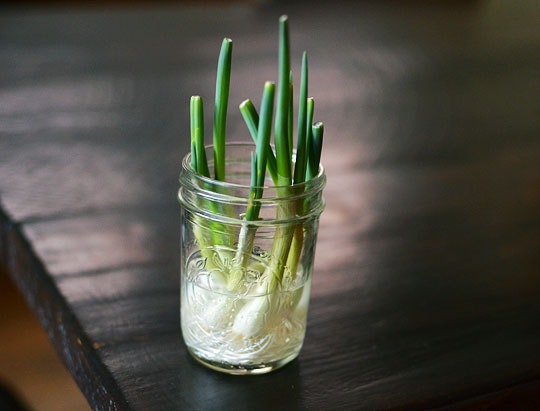
There are plenty of unique ways that you can grow scallions in your home without a garden. In fact, some homeowners simply place the leftover stems in a glass of water and allow them to grow. Also known as green onions, scallions are a great space-saver when you want to grow your own food. This is because they grow vertically in very thin stems.
An alternative approach to growing scallions is to use a pot and potting soil. Use your leftover scallion stems and bury them in the pot with your soil. You can then harvest the tops as you see fit and they will continue to grow back.
3. Carrots
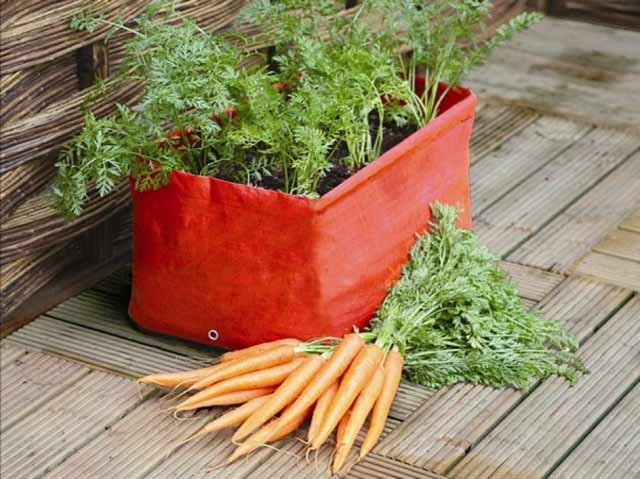
Unlike planting them outside, indoor carrots aren’t going to be giant in size. However, with the right planting methods, you can take advantage of them throughout the whole year. On average, most carrot varieties will require a pot that is at least 8” deep. Fill the pot with moistened potting soil and plant your carrot seeds at least ¼ deep. Place the pot in a windowsill that gets the most sun and keep the soil moist. Similar to the lettuce mixes, once the seeds start to germinate, thin them out.
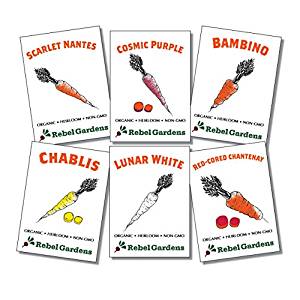
The only downfall to growing carrots is that they won’t grow back on their own, unlike the other plants on this list. Once you have harvested your crop, you will have to plant a new batch approximately every 2 weeks.
4. Garlic Greens
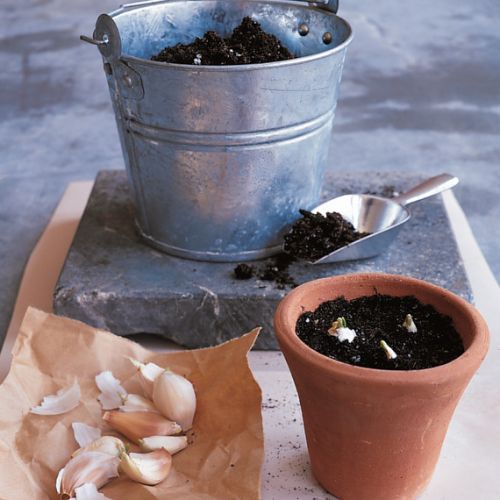
Nearly everyone uses garlic in the majority of dishes they create. Unfortunately, growing regular garlic bulbs inside is rather difficult. This is why we prefer garlic greens, as they behave similarly to scallions. You’ll need to begin with a few bulbs of garlic, though, in order to get the greens started.
First, you’ll want to find a 4” pot that has drainage holes in the bottom. If you’re interested in recycling old containers in your fridge, you can use a large yogurt container as well. Fill the pot with moist soil until there’s about .5” left at the top. Take your garlic bulbs and break apart the cloves, leaving the peel intact. You can then push the cloves under the soil and make sure that you water them well. Garlic greens need a sufficient amount of water and as such, your soil should always remain moist.
5. Microgreens
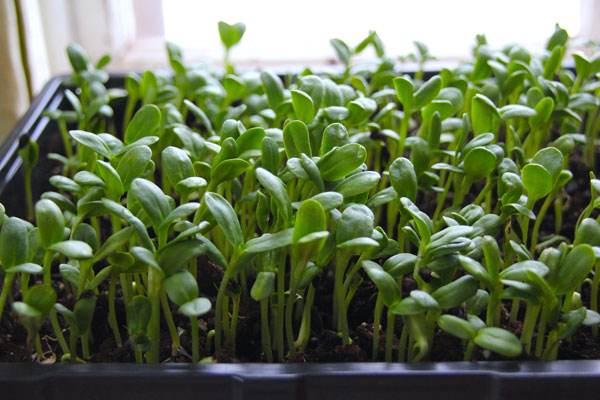
If you’re someone who doesn’t have a lot of patience, growing regular greens inside can be too time-consuming. This is where microgreens come into play as they offer plenty of benefits and taste incredibly delicious. In fact, a single bowl of microgreens can give you an incredible amount of vitamins K, A, and C, as well as folate.
The first thing you’ll want to do is purchase a wide variety of microgreen seeds. In fact, most stores will offer microgreen variety packs that come with everything you’ll need. You will then want to use a seedling tray and fill it with potting mix. Using water, get the soil moist and then sprinkle your seeds across the soil. Taking another thin layer of soil, sprinkle that on top of the seeds. Finish the planting with a spray bottle filled with water and gently mist the soil.
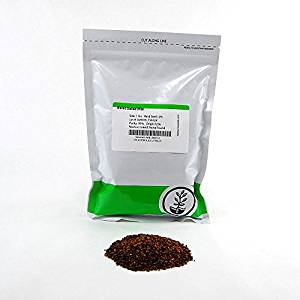
Microgreens should have one of the best places on your windowsill as they need a lot of sunshine. They’re also going to need to be kept at room temperature (between 60 and 70 degrees).
6. Herbs
Herbs have the ability to completely transform your meals and add an abundance of flavor. Most people also know that they’re some of the easiest plants that you can grow without a garden. In fact, they’re so simple to work with that you can find online growing kits that come with everything you need. However, if you want to handle the task on your own, all you have to do is follow these steps.
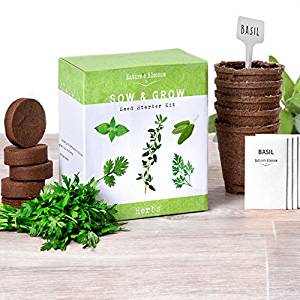
First, find a container that gives you 4” of width and has plenty of good drainages. Make sure that you regularly fertilize the soil at least once a month using slow-release fertilizers. Although herbs are easy to work with, they need a lot of nutrients in order to be the most fragrant they can be!
Final Thoughts
There’s no need to give up your dreams of growing your own food if you don’t have enough land for a garden. The vast majority of delicious vegetables can be grown entirely indoors. All you’ll need is a couple of basic items and you’ll be well on your way to creating your own produce. This will not only help you to save on your monthly grocery bills but to also have a great family-friendly activity.
Pin for later
